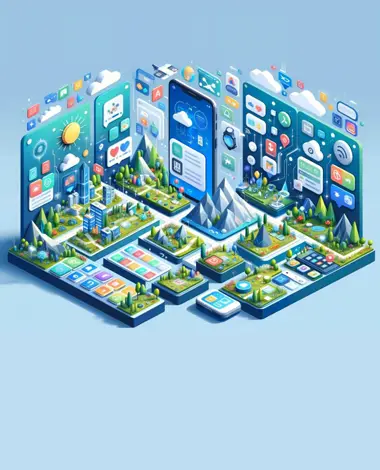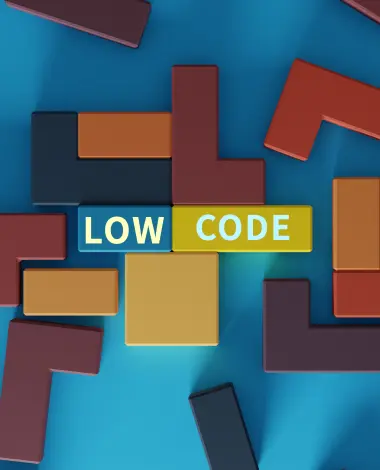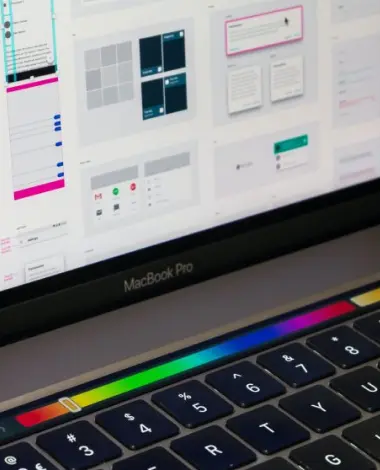Let’s face it! Everyone with a smartphone on the face of this planet is chronically dependent on one mobile app or another. Mobile applications have become a part of our daily routines. With more than 6.3 billion smartphone users worldwide, mobile apps are expected to generate $935 billion in revenue in 2023 — and these numbers will only rise in the coming years.
This is great news for app developers, publishers, and anyone planning to develop an app. However, mobile app development is a highly competitive market. In 2022, the Apple App Store already has more than 1.6 million apps available for download, while 3.55 million apps are lined up for users on the Google Play Store. Does that mean it is too late to enter the space? Not really.
User expectations with mobile apps are constantly evolving, and developers can always improve and differentiate their apps through constant innovation. Building a creative and seamless user experience will draw users to your mobile application and help you grab a major market share. To do this, you must incorporate mobile app development trends, such as AI, ML, no-code, 5G technologies, and wearables, into your application development process.
In this blog, we will highlight seven industry-best mobile application development trends and explain how you can implement them for your app development process. Let’s get started!
7 Mobile App Development Trends Shaping the Future of App Creation
Let’s dive into it! Here are the top 7 mobile app development trends that are shaping the future of app creation:
1. 5G Technology
While most carriers didn’t begin rolling out 5G access until 2021, the excitement surrounding fifth-generation wireless technology (5G) has been growing for the greater part of a decade. In the years since its introduction, 5G technology has advanced dramatically, providing faster and more expansive coverage. As of June 2023, 5G had 1.1 billion users worldwide, and by 2028, this number is supposed to increase by 4.6 billion, overtaking half of all mobile subscriptions.
5G technology is all about speed, operating at about 100x faster speeds than other mobile networks today. This is important because it enables users to connect not just with phones but also with wearables, gadgets, and machines, ranging from individual users to enterprise networks. Information is delivered in milliseconds thanks to 5G’s high speed, which lowers latency and improves user experience.
The 5G environment is expected to facilitate massive data exchanges between apps and services, increasing the benefits of cloud computing’s accessibility across a wide range of devices. This could also lead to the opening of new app markets. In addition to having to produce apps that can process this volume of data, developers will be competing to be the first to produce apps that can use real-time data to produce new and more beneficial apps.
Some examples of 5G technology apps include applications for smart cities such as intelligent street lighting, emergency response, traffic control, local broadcasting, energy management, smart power systems, intelligent street lighting, and fast weather updates. Furthermore, smart 5G-enabled medical devices and high-definition imaging technologies are also being developed that can have a widespread impact on improving healthcare for the masses. 5G can also elevate the popularity of esports competitions like DOTA2 and League of Legends for gaming entertainment. Last but not least, 5G technology can be used for efficient automation of equipment, predictive maintenance, safety, process tracking, smart packing, shipping, logistics, and energy management in industrial IoT and fleet management industries.
To incorporate this trend, more smartphones will need 5G-compatible hardware, and governments and telecom services providers will need to invest in building 5G infrastructure.
2. AI and ML Integrations
AI and ML integrations are well-established in the mobile app development industry. First incorporated in chatbots, their synergy, embodied by Siri — has grown to be essential to the mobile application development sector.
Owing to AI and machine learning, chatbots, ChatGPT, Gemini, Local LLM, Siri, and wearable technology will see significant changes and impacts in 2023 and the upcoming years. These technologies are already being used by several businesses in various ways to boost revenue and cut costs. In fact, 47% of the most sophisticated businesses have integrated AI into their mobile apps to encourage a personalised approach toward marketing.
AI and ML technologies power many advanced mobile app features, including chatbots, facial recognition, motion detection, recommendation engines, speech recognition, text prediction, and financial forecasting. This is perfect for propelling the future of app creation, where security will be a huge concern. Businesses, particularly those in the insurance and financial industries, can employ AI and machine learning to detect fraud and enhance user safety and data protection.
These applications demonstrate a considerable presence of AI and machine learning in mobile app development. Consequently, there is a growing need in this dynamic business for open innovation in the form of user-friendly tools that support data scientists and app developers.
3. Augmented Reality (AR) and Virtual Reality (VR)
Augmented and virtual reality technologies have been around for a while, but with significant advancements in the respective fields, their use has shot up in the mobile app development industry. Consumers believe AR to be the most disrupting technology, overtaking AI.
While virtual reality (VR) generates fully fake settings, augmented reality (AR) superimposes artificial graphics over the actual world to enable gamified experiences such as Pokémon Go. Another example of the use of AR and VR technologies in app development is the Apple Watch. With only a few clicks, one can now call, chat, and connect with others using this device, which was formerly just a watch with a clock and other basic functions.
While AR and VR technology majorly grew in popularity in the gaming sector, recent developments after the pandemic have got them rapidly expanding to other industries, including travel, real estate, and retail. Rapid app development made virtual home walk-throughs possible since 2020, as in-person open houses became less feasible. Using apps like RealAR, realtors could transform 2D-floor plans and 3D models into life-size walkthroughs for potential buyers and tenants to give them an intimate digital experience of spaces before they are fully furnished.
Besides this, there are apps like MagicPlan for generating floor plans from photos and AirMeasure for measuring the dimensions of any type of space accurately.
Using AR and VR technologies, a small business owner can create a sales CRM for their customers, a teacher can build apps for interactive student learning experiences, and communities can share events and information on websites. In short, AR and VR technologies have a lot of potential, and developers may easily access the frameworks.
4. Mobile Commerce
Mobile commerce is not new; in fact, it is simply an extension of e-commerce trends taking the world by storm. With more time spent on mobile devices than desktop computers, mobile commerce is a logical progression of technology. Research indicates that 85% of online shoppers prefer an eCommerce app to typical eCommerce websites.
With eCommerce giants like Amazon logging insane profits from mobile commerce, more and more businesses are searching for strategies to drive sales and compete with the industry titans because they have noticed this trend.
The use of mobile wallets for payments, like Apple Pay and Google Wallet, is also becoming more and more common. Businesses want to provide customers the choice of paying with their cards or without cash, and thus, the overall trend towards mobile commerce is encouraging the creation of new apps. Newer businesses can start with less overhead by using mobile commerce solutions, and established firms, including those with brick-and-mortar shops, desire to provide mobile payment and purchasing choices.
Furthermore, mobile commerce can directly collect customer data from browsing behaviours, support marketing initiatives at lower costs, enable an omnichannel shopping experience, and digitally transform your loyalty programs.
5. No- and Low-Code Platforms
The rise of no-code and low-code platforms is another hot trend in the present-day mobile app development industry. With the help of pre-built components and graphic interfaces, even those with little to no coding experience can create mobile applications. This makes this trend insanely popular amongst businesses with minimal resources. In fact, no- and low-code solutions use 70% fewer resources as compared to traditional app-building platforms.
Such software offers shortcuts and tools to developers so they may create interactive applications faster. For instance, Zapier offers plug-and-play interactions with various features and services.
These platforms provide pre-defined templates, drag-and-drop functionality, and easy-to-use tools for creating and configuring app features. This trend can help every mobile app development business enable quicker app development cycles, save expenses, and drive innovation by enabling non-technical people to bring their app ideas to life.
One great example is Zoho Creator, a low-code software that allows business users to build their own applications without writing a line of code. You may customise your apps with various form fields, pre-designed templates, and user-friendly drag-and-drop functionality to meet your unique business requirements. If you want to do this on an enterprise level, you can use Mendix. It offers a wide range of capabilities, such as AI-assisted development, app templates, and drag-and-drop functionality. The flexibility and integration features of Mendix guarantee that your apps expand together with your organisation.
Owing to these platforms, the future may probably even witness democratisation of the process of creating apps and opening new doors for businesses and individuals.
6. Wearable Devices
Wearable technology is becoming a significant part of the mobile development market, in addition to smartphones and tablets. Wearable technology has enormous promise, and businesses are slowly realising its potential. Research indicates that the wearables industry experienced a $44 billion boost in revenue from 2016 to 2022. This makes it one of the top mobile application development trends in current times.
Wearables today include smart devices such as earphones, watches, and even some types of clothing. Wearable technology can be used for various tasks, such as voice activation during phone calls and step-counting assistance.
Wearables comprise the majority of consumer electronics. However, there’s growing interest in applying them to more than just step counting, especially in the medical field. For instance, the U.S. Food and Drug Administration has approved an electrocardiogram software for wearables like the Fitbit, allowing them to track abnormal heartbeats. In the near future, we can expect more smart apps with security-related functions linked to wearable technology.
Developers are taking one of two approaches to building wearables — either they are creating apps designed for watches and other items that users attach to themselves or attempting to incorporate wearables into the creation of normal apps. Certain companies provide developers access to frameworks and APIs that simplify creating apps tailored for wearable technology. Wearables with minimal hardware components can collect and send data without consuming a lot of storage space, thanks to cloud computing.
The future of app creation can be greatly impacted by wearable technology. If you decide to follow this trend, it is crucial to be aware of the various screen sizes, lightweight design, low energy consumption, seamless data transfer, and small user interface.
7. IoT-Enabled Applications
The Internet-of-Things (IoT) is an ecosystem of sophisticated devices that can interact with one another through the Internet. Some examples of its applications include internet-connected systems for controlling lights and heating that can be voice-controlled using Alexa, Siri, or your Google Assistant.
Every day, more and more gadgets with integrated computer hardware are being created due to developments in the IoT sector. Thus far, users have exhibited unbridled enthusiasm for its future. In fact, the number of IoT-enabled devices worldwide is projected to cross 74.5 billion by 2025.
IoT-enabled devices have a lot of practical applications. Auto information centres, smart refrigerators, automated manufacturing equipment controls, and medical device monitoring are all connected by the Internet of Things. Mobile apps can now control medical equipment, wearables, and sensors. Numerous smart gadgets are connected to IoT mobile apps via Bluetooth, Wi-Fi, and NFC networks. IoT technologies also have an extensive impact on many other industries, such as building management, healthcare, energy, and agriculture. However, it has been the most effective for the logistics industry. IoT can be used for tracking and analysing stock using smart labels or RFID chips, optimising storage using IoT sensors to detect changes in temperature or pressure, managing vehicle fleets using GPS technology, and monitoring the supply chain from end to end. Last but not least, IoT technologies are also intricately tied into nearly every emerging application, including wearables, smart cities, smart retail, industrial IoT platforms, and connected autos.
Customers in the coming years will increasingly expect to be able to monitor their equipment from their mobile phones, receiving operational data and fault alerts. Self-driving cars, smart home appliances, and other affordable IoT tech are already taking the world by storm. This shows how the trend of IoT-enabled applications is here to stay!
Final Thoughts
The evolution of modern-day technology is an exciting and ongoing phenomenon, with new versions hitting the stores every year. This goes a long way toward guaranteeing that the mobile app market will keep on growing in the years to come. However, to make an impact, you will require flexibility, constant learning, and a keen eye for emerging trends.
The ones highlighted above can get you started, but ensuring that your application reflects the newest trends is the only way to set yourself apart in the eyes of your users. Start leveraging the hottest mobile app development trends shaping the future of app creation to create profitable and user-focused mobile applications in the present-day dynamic digital environment.
Table of Contents












